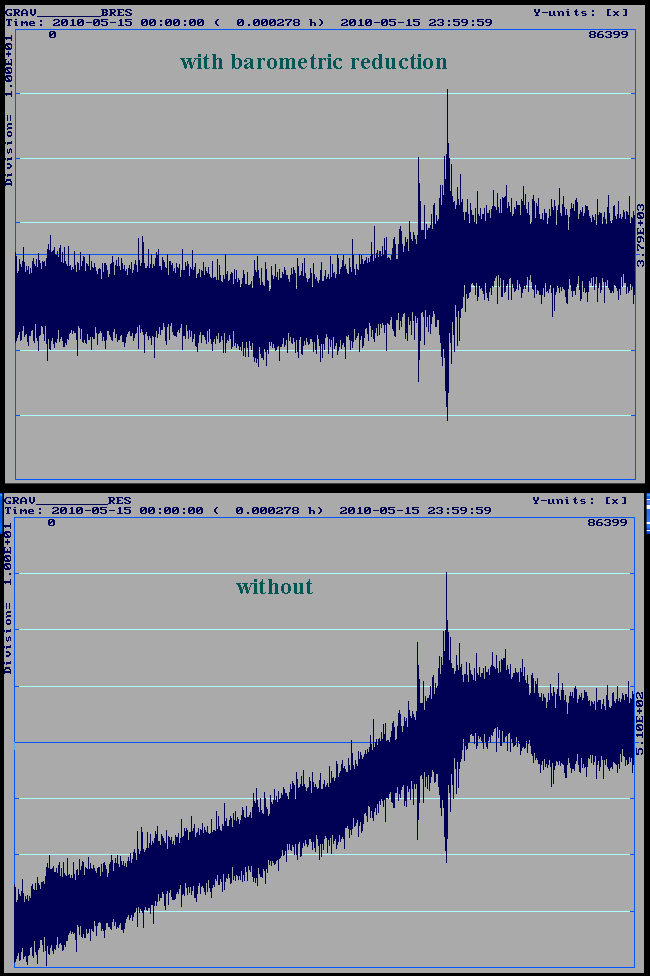and with the recently added Tamura potential, the
following was obtained:
daily-resid -B F -T garb RAW_o054/G1100515.054
tsd -n 86400,1,c -L 'G|R' d/G1_garb_100515-1s.mc
tsd -n 86400,1,c -L 'G|B' d/G1_garb_100515-1s.mc

| With the option to generate a barometric
residual, and with the recently added Tamura potential, the following was obtained: daily-resid -B F -T garb RAW_o054/G1100515.054 tsd -n 86400,1,c -L 'G|R' d/G1_garb_100515-1s.mc tsd -n 86400,1,c -L 'G|B' d/G1_garb_100515-1s.mc |
 |
daily-resid -BS F -T garb RAW_o054/G1100515.054
cd ~/TDIn a new xterm, bash:
set days = ( `jdc -D -L0,21 -m -A1 -fs 2018 04 18` )
foreach d ( $days )
daily-resid -B F -T garb RAW_o054/G1$d.054
end
rm -f d/tmp/g090615-OPNEND-1h.mc
/bin/cp -f d/g090615-OPNEND-1h.mc d/safe/
tslist d/g090615-OPNEND-1h.mc -LG -LB -I -U2018,4,17,5 -O1:=+2:= d/tmp/g090615-OPNEND-1h.mc
mv d/tmp/g090615-OPNEND-1h.mc d/g090615-OPNEND-1h.mc
/home/hgs/TD/ts4openend GBR